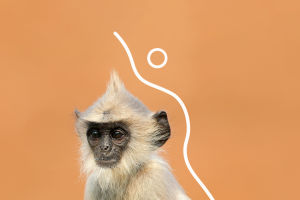Cheetahs belong to a genus in the subfamily Feline, different from lions, tigers, leopards, jaguars, etc., which belong to a genus in the subfamily Panthera.
People often say that cheetahs are incompetent, and sometimes even pretend to be honey badgers to scare off predators, but this rumor has not been confirmed. Follow along with this article to learn more about this charming big cat.
Cheetahs are one of the fastest animals in the world. In 2012, at the Cincinnati Zoo in Ohio, a cheetah named Sarah ran the full 100 meters in 5.95 seconds, reaching a peak speed of 61 miles per hour (98 kilometers). This broke the world record previously held by itself.
When a cheetah sprints at its full speed, one step can reach 21 feet, which is between 6 and 7 meters. Every time a cheetah chases prey, it consumes almost all of its energy, which overloads its respiratory and circulatory systems.
This makes them chasing prey at distances generally limited to about 200 meters, lasting no more than a minute.
If a cheetah exceeds this range, its body will cause its body temperature to rise sharply, reaching more than 41 degrees Celsius, and eventually causing the body to collapse.
Normally, even if a cheetah successfully kills its prey, it takes about 30 minutes to recover before it can eat.
The cheetah not only runs fast, but it also starts very fast. They go from start to 60 mph in just 3 seconds.
When it comes to the roar of big cats, the mighty roar of a lion and the roar of a domineering tiger will first appear in the minds of many people. But have you ever heard a cheetah roar?
Not only is the cheetah's voice not at all powerful and domineering, but it is also even a little cute. The structure of the vocal cords of cheetahs is different from that of other big cats, and it’s the reason why cheetahs can’t roar.
The hyoid bone in their throat is so hard that the sounds cheetahs make become small and high-pitched. But tigers or lions’ hyoid bones have been replaced by a ligament, making their sound loud and low.
Therefore, although all of them belong to the leopard family, the cheetah is separately included in the cat subfamily. Big cats such as tigers, lions, and jaguars are all subfamilies of Panthera. The roar is one of the important signs to distinguish these two.
Unlike many big cats, cheetahs usually hunt during the day.
They will use the cover of hills or another terrain to quietly approach their locked prey, and then suddenly activate when they are about 30 meters away from the prey, with their lightning speed, they will deliver a fatal blow to the throat of the prey.
Cheetahs have relatively short teeth and usually cannot kill their prey at once. Usually, cheetahs’ prey that is bitten by the throat die of suffocation, and it takes them 5 minutes or even more than 10 minutes.
Once the prey dies, it drags the carcass into the jungle to enjoy its lovely meal. Cheetahs can survive three or four days without a drop of water, but they need to eat about 2kg of meat every day.
Cheetahs have been living on this planet for 1-2 million years and there was a time when they were widely distributed across the continents of Africa and Asia. But today, they live on the dry, open grasslands of sub-Saharan Africa, and most of them live in nature reserves or national parks.
In 1900, there were approximately 100,000 cheetahs over the world. Today, its wild population has dropped to between 9,000 and 12,000.
The three main reasons for their sharp decline include wanton hunting by humans for illegal trade, the year-by-year habitat encroachment by humans, and the drastic reduction of herbivores.
In addition, the low genomic diversity of cheetahs also leads to disease outbreaks and reproductive difficulties in cheetah populations. In 2015, cheetahs were included in the Red List of Threatened Species by the International Union for Conservation of Nature (IUCN).


